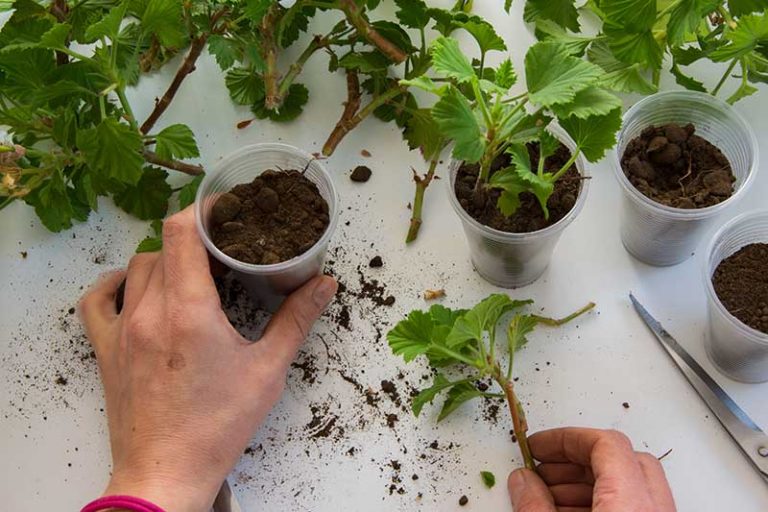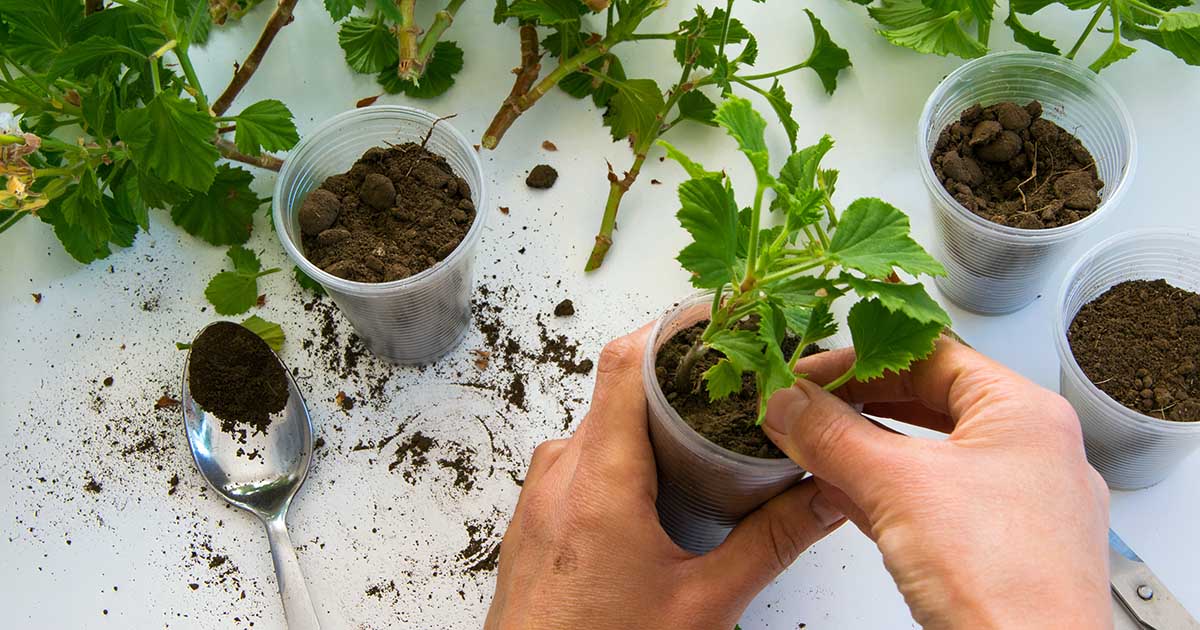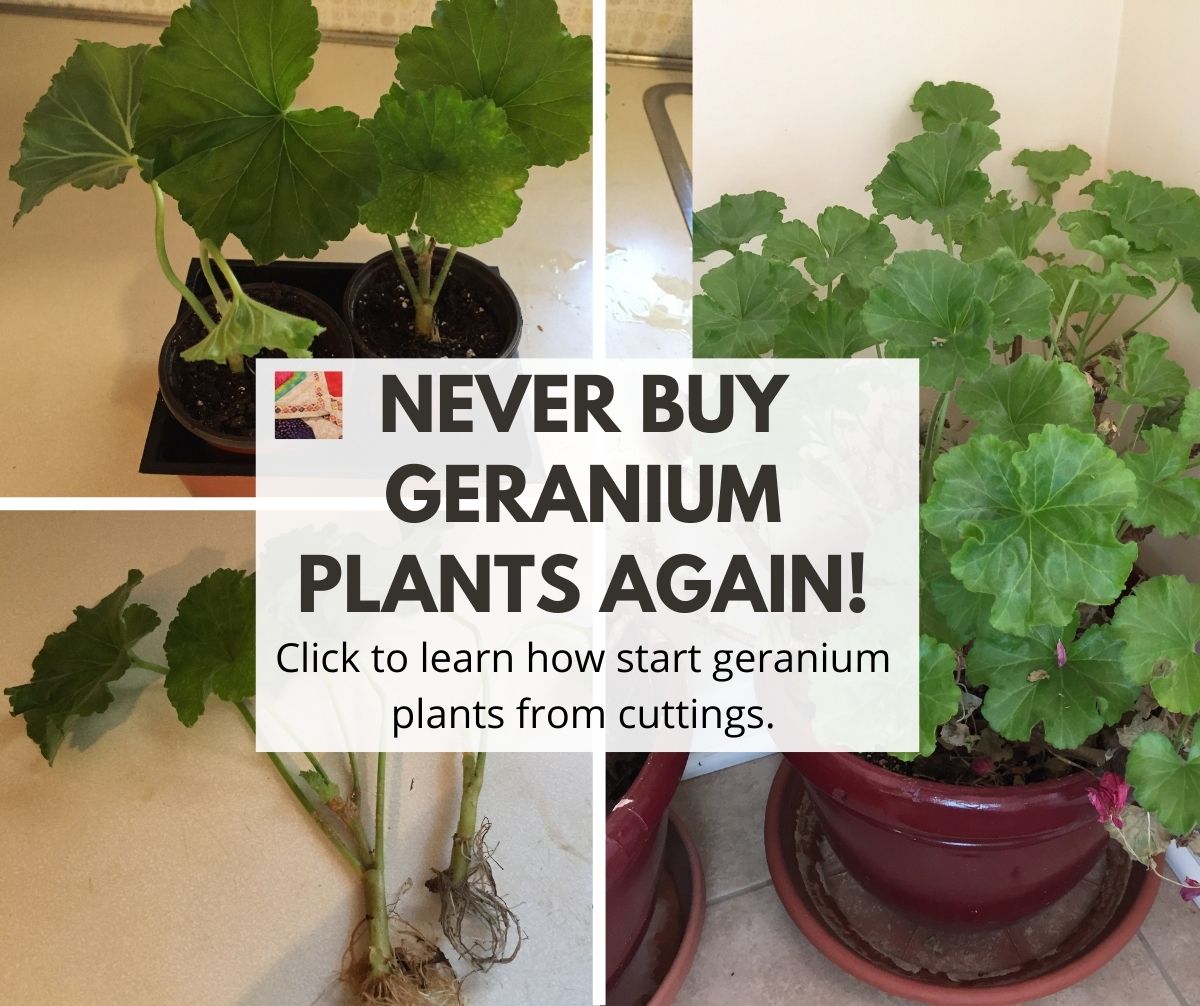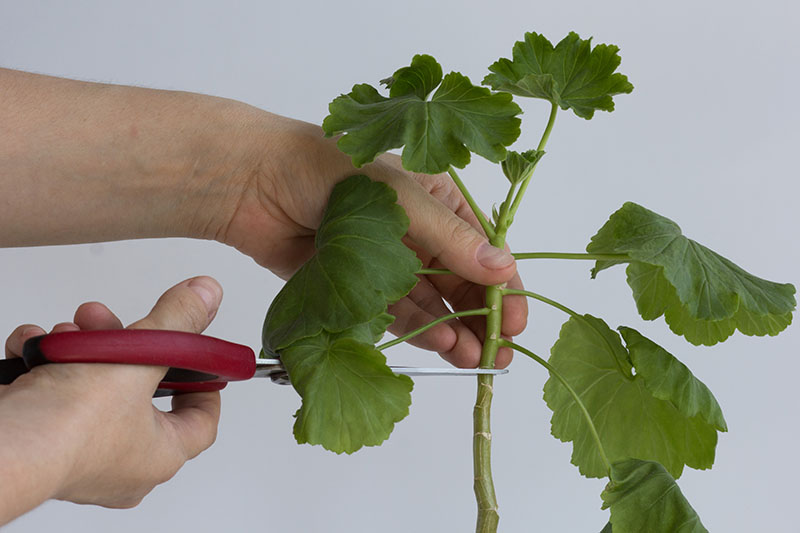Why Geranium Cuttings are a Great Option for Gardeners
Geraniums are one of the most popular flowering plants, and using cuttings is an excellent way to propagate them. By learning how to plant a geranium cutting, gardeners can enjoy an abundance of these beautiful plants in their gardens. This method is not only cost-effective but also allows for the reproduction of identical plants, ensuring consistency in growth and bloom quality. Moreover, geranium cuttings are relatively easy to root, making them an ideal choice for those new to plant propagation. With the right techniques and care, gardeners can multiply their favorite varieties and share them with friends and family, making it a great option for gardeners of all skill levels.
Preparing the Perfect Cutting: Tips and Tricks
When it comes to preparing a geranium cutting, selecting a healthy stem is crucial for successful propagation. Look for stems with plenty of new growth, as these will have a higher chance of rooting successfully. The ideal length for a geranium cutting is around 3-4 inches, with at least two nodes (the joints where the leaves meet the stem). It’s also essential to remove lower leaves, leaving only two or three sets of leaves at the top. This helps prevent the cutting from drying out and reduces the risk of root rot. Timing is also important, as the best time to take cuttings is during the spring or summer when the plant is actively growing. By following these simple tips, gardeners can increase their chances of successfully planting a geranium cutting and enjoying a thriving new plant.
How to Root Geranium Cuttings: A Step-by-Step Guide
To successfully root a geranium cutting, follow these simple steps. First, prepare the cutting by removing lower leaves and trimming the stem to the desired length. Next, dip the cut end of the stem into a rooting hormone powder or liquid to promote root growth. Then, plant the cutting in a well-draining soil mix, gently firming the soil around the stem. Water the soil gently but thoroughly, making sure not to wash away the rooting hormone. Finally, place the potted cutting in a warm, bright location with high humidity, such as a greenhouse or a propagation tray with a clear plastic cover. By following these steps and providing the right conditions, gardeners can increase their chances of successfully planting a geranium cutting and enjoying a thriving new plant. Remember, learning how to plant a geranium cutting requires patience and attention to detail, but the rewards are well worth the effort.
The Importance of Soil Quality and Drainage
When it comes to planting a geranium cutting, soil quality and drainage are crucial factors to consider. Using a well-draining soil mix can make all the difference in the success of the propagation process. Poor soil quality can lead to root rot, which can be devastating to the young plant. On the other hand, a well-draining soil mix allows excess water to escape, reducing the risk of root rot and promoting healthy root growth. To ensure optimal drainage, gardeners can mix in perlite, vermiculite, or sand to improve the soil’s structure. Additionally, using a pot with good drainage holes can help prevent waterlogged soil. By selecting a high-quality potting mix and providing adequate drainage, gardeners can create an ideal environment for their geranium cutting to thrive. Remember, understanding how to plant a geranium cutting requires attention to detail, including the importance of soil quality and drainage.
Watering and Humidity: The Key to Successful Germination
Maintaining optimal watering and humidity levels is crucial during the germination process of a geranium cutting. Overwatering can be detrimental to the young plant, causing root rot and poor growth. On the other hand, underwatering can lead to slow growth and weak roots. To achieve the perfect balance, gardeners should water the soil gently but thoroughly, making sure not to wash away the rooting hormone. It’s also essential to maintain high humidity levels, typically between 50-70%, to promote healthy root growth. This can be achieved by covering the pot with a clear plastic bag or a cloche. By understanding how to plant a geranium cutting and providing the right watering and humidity conditions, gardeners can increase their chances of successful germination and promote healthy growth. Remember, patience and attention to detail are key when it comes to propagating geranium cuttings.
Providing the Right Conditions: Light, Temperature, and Fertilization
Once a geranium cutting has been planted, it’s essential to provide the right conditions for it to thrive. Geraniums require bright, indirect light, but direct sunlight can cause scorching. A south-facing window or a spot with filtered sunlight is ideal. In terms of temperature, geraniums prefer daytime temperatures between 65-75°F (18-24°C) and nighttime temperatures around 55-65°F (13-18°C). Fertilization is also crucial, and a balanced, water-soluble fertilizer can be applied once a month. Additionally, providing support for the plant as it grows is vital, and pruning can help maintain a bushy shape and encourage blooming. By understanding how to plant a geranium cutting and providing the right conditions, gardeners can increase their chances of success and enjoy a thriving, blooming plant. Remember, attention to detail and patience are key when it comes to propagating geranium cuttings.
Troubleshooting Common Issues: Pests, Diseases, and Nutrient Deficiencies
When learning how to plant a geranium cutting, it’s essential to be aware of common issues that may arise during the propagation process. Pests, such as spider mites, mealybugs, and aphids, can infest geranium cuttings and cause damage. Regularly inspecting the plant and using organic pest control methods can help prevent infestations. Fungal diseases, like root rot and leaf spot, can also affect geranium cuttings, especially if the soil is too moist or poorly draining. To prevent diseases, ensure good air circulation, remove infected leaves, and treat the plant with a fungicide if necessary. Nutrient deficiencies, such as a lack of nitrogen, phosphorus, or potassium, can cause poor growth and weak roots. Fertilizing the plant with a balanced fertilizer and monitoring its nutrient levels can help prevent deficiencies. By being aware of these common issues and taking preventative measures, gardeners can increase their chances of successfully planting a geranium cutting and enjoying a healthy, thriving plant.
From Cutting to Blooming Beauty: The Rewards of Patience
After learning how to plant a geranium cutting and providing the right conditions, the wait begins. With patience and proper care, a geranium cutting can transform into a thriving, blooming plant. The joy of watching a small cutting grow into a beautiful, flowering geranium is unmatched. As the plant matures, it will require regular maintenance, such as pruning and fertilizing, to promote healthy growth and encourage blooming. With time and attention, a geranium cutting can become a stunning addition to any garden or indoor space, providing beauty and joy for months to come. By following the steps outlined in this article, gardeners can successfully plant a geranium cutting and enjoy the many rewards of propagation, including the satisfaction of growing a new plant from scratch and the pleasure of watching it thrive.









